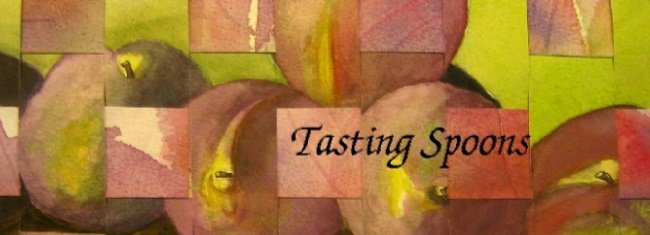Borscht with Andouille - My First Attempt
Some years ago we were at the home of friends, and many others had been invited to participate in a Russian dinner. Each couple brought something. I made a pie, I think. With a crust that should never be repeated. I'd followed a recipe that was supposed to be a Russian type, made with an egg yolk. Well, anyway, we'll gloss over that disaster. One of the other couples brought a very authentic borscht. It was what she called a winter borscht, made with beef. It was deliciously deep in flavor, but she wouldn't share the recipe, was almost offended that I'd ask, as it was a family one. I've never forgotten that borscht, and have pined away, wishing I knew how hers was made. So, ever since, I've collected borscht recipes, thinking I'd make it sometime.
Wikipedia has a very comprehensive page of information about borscht. About its origin (Russian, Ukrainian, Lithuanian, even Polish), and its two major variations (hot-winter, and cold-summer). The common thread is beets (except for one summer version using sorrel), but what a bunch of variations it suggests. Makes my mind reel even thinking of all the combinations. About as varied as curry powders are to the East Indians, or a green salad to anyone in the world. It's all in the interpretation, and what is in your larder.
Set before me I had four recipes, all slightly different. Naturally, the common thread was beets. Yet they all included onions, tomatoes, tomato paste, and cabbage. Two had beef in it. Another was vegetarian. And one had andouille sausage (also likely not authentic).
Sidestep with me a bit. We have friends, Mike & Norma. Mike does most of the cooking in their house, and as a Louisiana boy, he loves his rice, red beans. And Andouille (pronounced ahn-doo-wee) sausage. A year ago Mike made a dinner of red beans, rice and sausage for us, which was fabulous. And he kindly bequested to me a package of Andouille. I tucked it into the freezer until I was ready to make something with it. It's been a year, for goodness' sake. But Sunday was the day to use it.
I took what I thought was the best of all four recipes and made it my own. Even adding one little thing that probably isn't true to the genre of borscht, that being thyme.
I baked the beets in the oven (easier to get the skins off), sauteed the vegetables, added almost all the ingrients and simmered for a couple of hours. At the very end you add the Andouille. I'm sure I've mentioned before, if you simmer a sausage (a delicious, flavorful sausage of any kind) in a soup, it gives up all of its flavor to the soup, so when you chow down and expect that Kielbasa or Hungarian sausage to have some flavor, you'll find that it's absolutely blah. Nothing but soft texture with no flavor whatsoever. Test the soup for seasonings - mine needed just a tad more sugar (note there is 2/3 of a cup of red wine vinegar in it). So, the Andouille, a treasure for sure unless you happen to live anywhere near New Orleans, needs to be added in at the very end, so it still has that spark of heat and chewiness. The resulting chunky soup is just the richest red/orange color, and when serving garnish the soup with a moderate dollop of sour cream.

So, interpret away. Make borscht yours too, with additions of your own. And, THANKS MIKE, for the Andouille. I took two quarts of borscht to them on Sunday afternoon - that was Mike's request - whatever I made with the gifted Andouille, I needed to share it with him. Gladly!
Borscht with Andouille
Recipe: Carolyn T's original
Servings: 8
2 tablespoons olive oil
1 large yellow onion -- peeled, chopped
2 cloves garlic -- minced
2 large carrots -- chopped
3 stalks celery -- chopped
2 whole bay leaves
1/2 teaspoon thyme
1 quart chicken broth
2 pounds beets
1 whole potato -- peeled, cubed
28 ounces whole tomatoes -- crushed by hand, including juice
1/4 cup tomato paste
1 head red cabbage -- sliced thin
2/3 cup red wine vinegar
3 tablespoons brown sugar
3 tablespoons sugar -- or Splenda [may need a touch more]
1 tablespoon Hungarian paprika
3 cups water
12 ounces Andouille sausage -- skinned, chopped into cubes
1 cup sour cream
1. Preheat oven to 350. Cut off beet tops only, then place on foil lined baking sheet. Bake for 60 minutes, or until beets are just tender. Remove from oven and allow to sit for 15 minutes until they can be handled. Cut off tops and ends, then slip skins off beets and chop into cubes.
2. Meanwhile, heat a large soup pot over medium flame and add olive oil. Add onions and saute for 3-5 minutes until just beginning to brown around the edges, then add garlic, carrots, celery, bay leaves and thyme. Stir and cook for 1-2 minutes, then add the chicken broth. Add tomato paste, tomatoes, red wine vinegar and sugars and water. Bring to a simmer, then add cabbage and the paprika. Simmer for 2 hours at a minimum.
3. Taste for seasoning (add salt or pepper or both, as needed). Add more sugar if the mixture is too acidic. Add the Andouille sausage at the very end, just long enough to heat through.
4. Ideally, make this a day ahead and allow flavors to meld overnight. Heat to a simmer, scoop into large bowls and add a dollop of sour cream to each bowl.
NOTES : If you add the Andouille at the beginning, it will lose all its flavor to the soup. Therefore, add it at the very end, just before serving.
Per Serving: 377 Calories; 22g Fat (51.3% calories from fat); 14g Protein; 33g Carbohydrate; 5g Dietary Fiber; 36mg Cholesterol; 579mg Sodium. Exchanges: 0 Grain(Starch); 0 Lean Meat; 3 1/2 Vegetable; 0 Non-Fat Milk; 2 Fat; 1/2 Other Carbohydrates.
Printer-friendly recipe, click title at top.



3 comments:
How I remember the first (and only) time I ate Andouille in France. Bleah! But Boudin Noir (Black Pudding in England or Blood pudding) I adore. Isn't it strange what makes us like or dislike food flavours?
Do you suppose Andouille in France is different than our Cajun/Creole Andouille? Ours is a dry sausage, spicy, with some heat to it. And all I have to do is LOOK at Black Pudding and gasp No. Actually, I've never tried it (my loss, I'm sure).
Oh my! I have just seen what is in your Cajun sausages and it is so different from the French. Over there it is basically innards, pigs innards, in a casing. Not smoked usually but spiced. Maybe now you understand my initial reaction? LOL!
Post a Comment